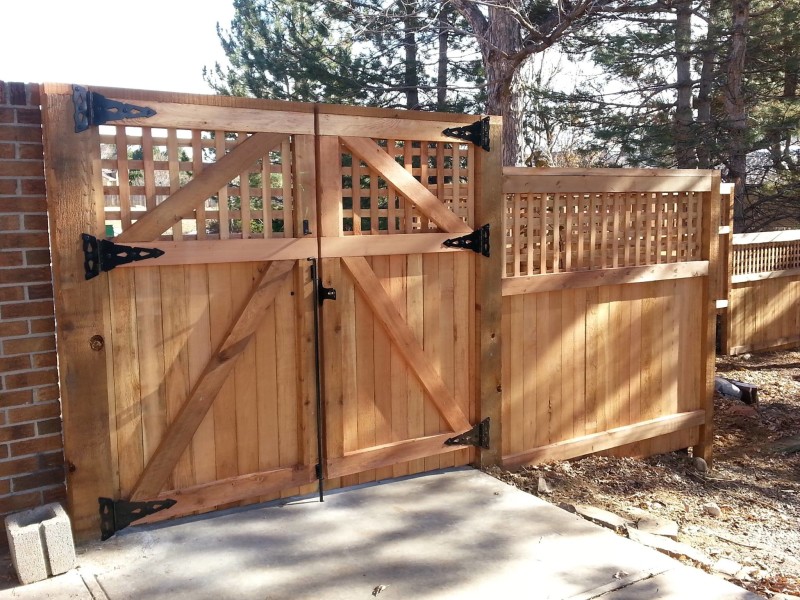All Categories
Featured

When you make a decision to mount a new fence, recognizing the timeline for completion is necessary to stay clear of any kind of shocks. The time it requires to finish a fencing installation can vary based upon multiple aspects, such as the sort of material used, the intricacy of the style, the dimension of the area to be fenced, and the condition of the site. Below, we will certainly damage down what affects the timeline and give you an estimated duration for various fencing types.
- Kind of Fencing Material. The material you choose plays a substantial role in just how long the setup procedure will certainly take. Below are the most usual kinds of fence products and their installation times:
Wood Fences: Conventional timber fences frequently take longer to mount, specifically if they are custom-made on-site. Expect the setup to take between 2 and 4 days, relying on the dimension and layout of the fence. Extra detailed timber fencings with included details (like ornamental messages or personalized designs) may take also much longer.
Plastic Fences: Plastic fencings are pre-made in panels, which permits for quicker setup. Generally, a vinyl fencing can be set up in 1 to 2 days, depending upon the size of the location being fenced.
Chain Link Fences: Wire mesh fence are fairly basic to install and can normally be completed in 1 to 2 days. The materials come pre-fabricated, making the installment process quicker and a lot more straightforward.
Aluminum/Wrought Iron Fences: These materials usually need even more precision and can entail welding or setting up components. Light weight aluminum or wrought iron fences take around 2 to 4 days to set up depending upon the complexity and size.
Compound Fences: Compound fences, which integrate wood and plastic, supply the appearance of timber with the longevity of vinyl. These fencings also come in pre-made panels, so setup can be carried out in 2 to 3 days.
- Size and Complexity of the Job. Larger residential or commercial properties will normally take more time to set up a fencing, particularly if the location is uneven or calls for considerable website prep work. A tiny backyard fencing may just take a day or more to set up, however a big home or commercial fencing might take several days to a week, specifically if there are added functions such as entrances, ornamental layouts, or if the land is tough to deal with.
- Site Prep work. The problem of the website can substantially affect the time it requires to set up a fence. If the land is irregular, rocky, or heavily wooded, extra time will certainly be required for clearing debris or preparing the ground. The elimination of an old fence or any kind of obstacles, such as trees or large rocks, can include a day or more to the task.

- Weather. Weather condition plays a significant duty in the period of a fencing installation. Rainfall, snow, or extreme heat can delay job, specifically when digging holes for messages or establishing the foundation for the fencing.
- Permits and Rules. Prior to installation starts, contact neighborhood authorities to see if you need an authorization for your fence setup. Authorizations can take anywhere from a few days to a few weeks to procedure, and if your fencing lies near home lines, you may need approval from neighbors or your house owners' organization. This paperwork can include time to your setup job, so make certain to plan appropriately.
Average Time for Installment. Based on the variables listed above, here are the normal time frames for fencing installments:
Tiny Residential Fence (under 100 feet): 1 to 2 days. Medium Residential Fence (100 to 300 feet): 2 to 4 days. Large Residential or Commercial Fencing (300+ feet): 4 to 7 days. Verdict. Usually, a simple household fencing installation takes between 1 to 4 days. Nevertheless, bigger, much more intricate projects may need up to a week, especially if comprehensive site prep work or several materials are entailed. To get a more accurate timeline, it is very important to consult with your fence service provider and discuss the certain details of your task, including products, website conditions, and any kind of potential hold-ups. By recognizing these elements ahead of time, you can ensure a smooth, prompt fence installation process.
Latest Posts
Explore Brake Repair & More: Full Repair Options from Montclare Auto Repair
Published May 23, 25
1 min read
Signs When Your Car Needs Expert Vehicle Service at Montclare Auto Repair
Published May 22, 25
1 min read
Discover the Top Auto Repair Offers in Montclare, Chicago
Published May 21, 25
1 min read